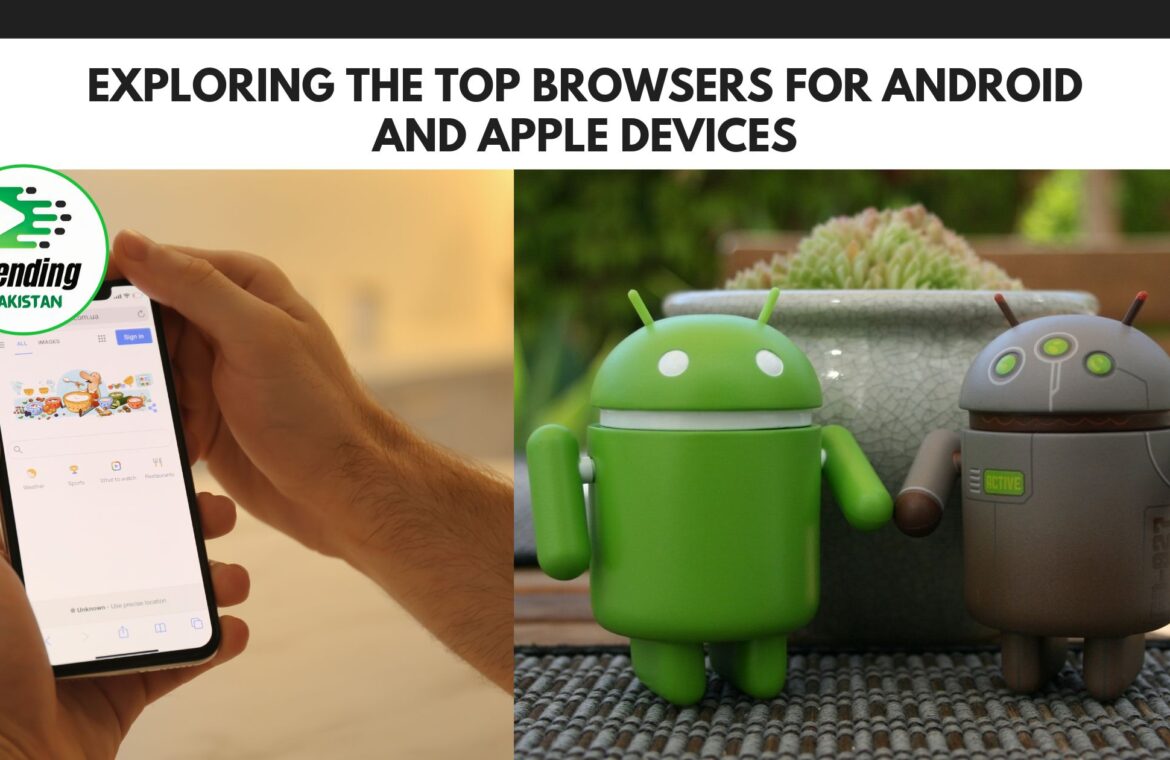In the modern digital landscape, web browsers serve as gateways to the vast expanse of the internet. With the proliferation of smartphones and tablets, mobile browsing has become an integral part of our daily lives.
Whether you’re an Android aficionado or an Apple enthusiast, choosing the right browser can significantly impact your browsing experience. In this comprehensive guide, we’ll delve into the top browsers for Android and Apple devices, analyze which browser is used the most, explore which ones are easy to use, consume the least memory, and delve into the rich history of each browser.
Understanding the Importance of Choosing the Right Browser
Before we delve into the specifics of individual browsers, it’s crucial to understand why selecting the right browser matters. A browser acts as your window to the internet, influencing everything from page loading speeds to security features and user interface design. With a plethora of options available, users often find themselves overwhelmed by choice. By examining the key factors that differentiate browsers, we can make informed decisions tailored to our preferences and requirements.
Top Browsers for Android Devices
1. Google Chrome
Google Chrome stands as the undisputed leader in the realm of Android browsers. Renowned for its speed, simplicity, and seamless integration with Google services, Chrome boasts a user-friendly interface and a plethora of features. With features such as cross-device syncing, built-in Google Translate, and intuitive tab management, Chrome offers a compelling browsing experience for Android users.
2. Mozilla Firefox
Mozilla Firefox has carved a niche for itself as a privacy-focused alternative to mainstream browsers. With robust privacy features, extensive customization options, and support for add-ons, Firefox provides users with unparalleled control over their browsing experience. Its commitment to open-source principles and dedication to user privacy make it a popular choice among privacy-conscious Android users.
3. Microsoft Edge
Microsoft Edge has undergone a remarkable transformation since its inception, emerging as a formidable contender in the Android browser market. Powered by the Chromium engine, Edge delivers exceptional performance, seamless integration with Microsoft services, and innovative features such as Collections and Immersive Reader. With its emphasis on productivity and cross-platform compatibility, Edge appeals to users invested in the Microsoft ecosystem.
Top Browsers for Apple Devices
1. Safari
Safari reigns supreme as the default browser for Apple devices, offering a seamless browsing experience optimized for iOS and macOS ecosystems. Known for its blazing-fast performance, energy efficiency, and tight integration with Apple services, Safari sets the standard for mobile browsing on Apple devices. With features like Intelligent Tracking Prevention and Safari Reader, Apple prioritizes user privacy and content accessibility, enhancing the overall browsing experience.
2. Google Chrome
Google Chrome maintains a significant presence in the Apple ecosystem, catering to users who prefer a familiar browsing experience across different platforms. While Safari remains the default browser on iOS devices, many users opt for Chrome due to its cross-platform compatibility, extensive feature set, and seamless integration with Google services. Despite facing competition from Safari, Chrome continues to attract a loyal user base on Apple devices.
3. Mozilla Firefox
Mozilla Firefox extends its reach to the Apple ecosystem, offering iOS users a privacy-centric browsing experience tailored to their needs. While Firefox may not enjoy the same level of integration as Safari or Chrome, its emphasis on user privacy, customization options, and support for extensions make it a compelling choice for iOS users seeking an alternative to mainstream browsers.
Browser Market Share and Usage Statistics
Analyzing browser market share and usage statistics provides valuable insights into user preferences and trends. According to recent data, Google Chrome commands the largest market share across both Android and desktop platforms, owing to its widespread adoption and robust feature set. Safari maintains a strong presence in the Apple ecosystem, benefitting from its seamless integration with iOS and macOS devices. While alternative browsers such as Firefox and Edge continue to attract users with unique features and privacy enhancements, they face stiff competition from industry giants like Chrome and Safari.
Factors Influencing Browser Performance
When evaluating browsers for Android and Apple devices, several factors come into play, including speed, usability, resource consumption, and security features. Users prioritize different aspects based on their individual preferences and requirements. While some prioritize speed and performance, others prioritize privacy and customization options. By considering these factors, users can identify the browser that best aligns with their needs and enhances their browsing experience.
Conclusion
In conclusion, selecting the right browser for your Android or Apple device is essential for optimizing your browsing experience. With a diverse range of options available, users have the freedom to choose a browser that caters to their specific preferences and requirements. Whether you prioritize speed, privacy, or cross-platform compatibility, there’s a browser tailored to meet your needs.
By exploring the top browsers for Android and Apple devices, analyzing market share trends, and understanding the factors influencing browser performance, users can make informed decisions and unlock the full potential of their mobile browsing experience.
Topics #featured #top browsers #trending pakistan




